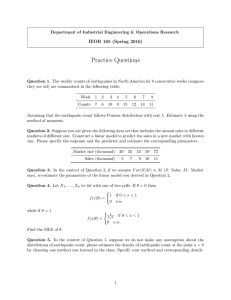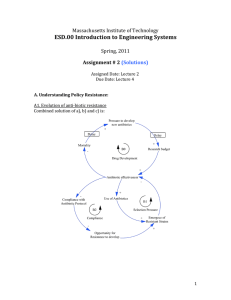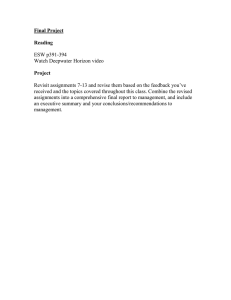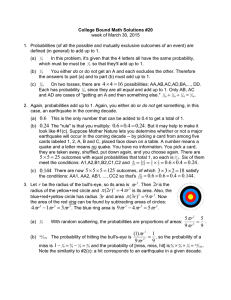ESD.00 I n t
advertisement
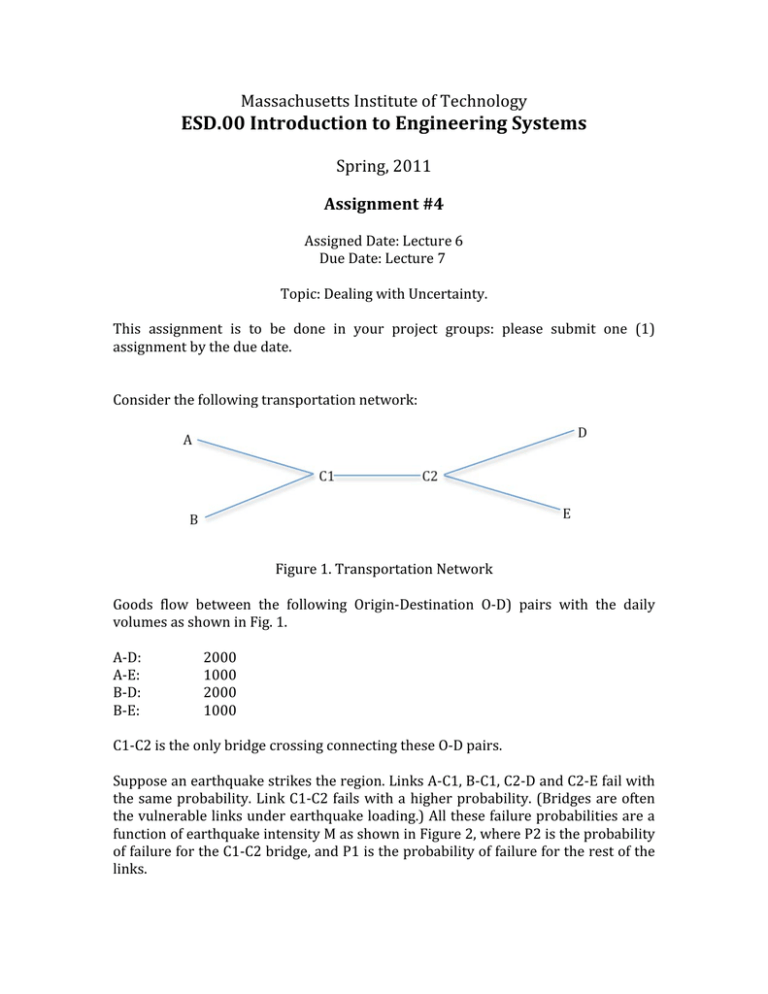
Massachusetts Institute of Technology ESD.00 Introduction to Engineering Systems Spring, 2011 Assignment #4 Assigned Date: Lecture 6 Due Date: Lecture 7 Topic: Dealing with Uncertainty. This assignment is to be done in your project groups: please submit one (1) assignment by the due date. Consider the following transportation network: Figure 1. Transportation Network Goods flow between the following Origin‐Destination O‐D) pairs with the daily volumes as shown in Fig. 1. A‐D: 2000 A‐E: 1000 B‐D: 2000 B‐E: 1000 C1‐C2 is the only bridge crossing connecting these O‐D pairs. Suppose an earthquake strikes the region. Links A‐C1, B‐C1, C2‐D and C2‐E fail with the same probability. Link C1‐C2 fails with a higher probability. (Bridges are often the vulnerable links under earthquake loading.) All these failure probabilities are a function of earthquake intensity M as shown in Figure 2, where P2 is the probability of failure for the C1‐C2 bridge, and P1 is the probability of failure for the rest of the links. NOTE: Just because the failure probabilities of the rest of the links are the same doesn’t mean they all fail (or don’t) in a given earthquake. Figure 2. Failure Probabilities as a function of M Below is a probability mass function of earthquake intensity M on a given day. For simplicity, we assume either zero or one earthquakes occur on a given day. Figure 3. Probability Mass Function of P(M) vs. M The probabilities of the occurrence of an M = 0, 1, 2, or 3 earthquake are shown in Figure 2. For earthquakes of M > 3, P(M) = 1/(10^(M‐1)). Suggestion: Use Excel for all your calculations. A. Starting with a completely operational network (all links are operational) for a given day, compute the probability of all the flows to D being feasible. Repeat for E. What is the probability that all flows are feasible? B. Again, starting with a completely operational network (all links are operational), what is the mean value of goods delivered to D on a given day? To E? Mean value of all goods delivered? C. Suppose you have $10,000,000 to strengthen the infrastructure. The following function describes what happens to the probability of failure of each of the two kinds of links as a function of both M and the investment you make. Suppose you spend $2,000,000 on each link. Solve parts (A) and (B) above again. P (Failure for C1‐C2) = log[10+x/20,000](M) (1) P (Failure for other links) = log[100+x/2,000](M) (2) where x is the level of investment per link. D. Perhaps spending the $10,000,000 uniformly over the five links is not the best use of the funds. Explore various alternatives for distributing the investment over the five links? Use your intuition to make good guesses. What is the best alternative you found? Explain why you think it is the best one that you found— Hint: you have to think about how one measures “best”. MIT OpenCourseWare http://ocw.mit.edu ESD.00 Introduction to Engineering Systems Spring 2011 For information about citing these materials or our Terms of Use, visit: http://ocw.mit.edu/terms.
